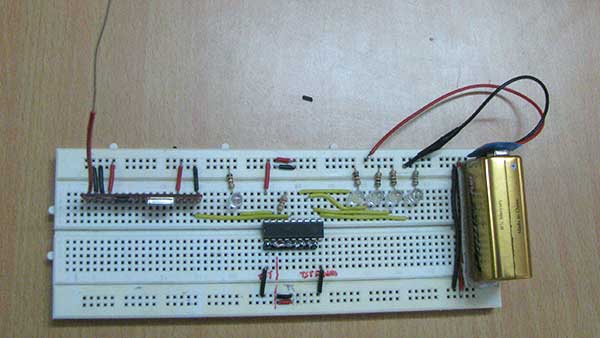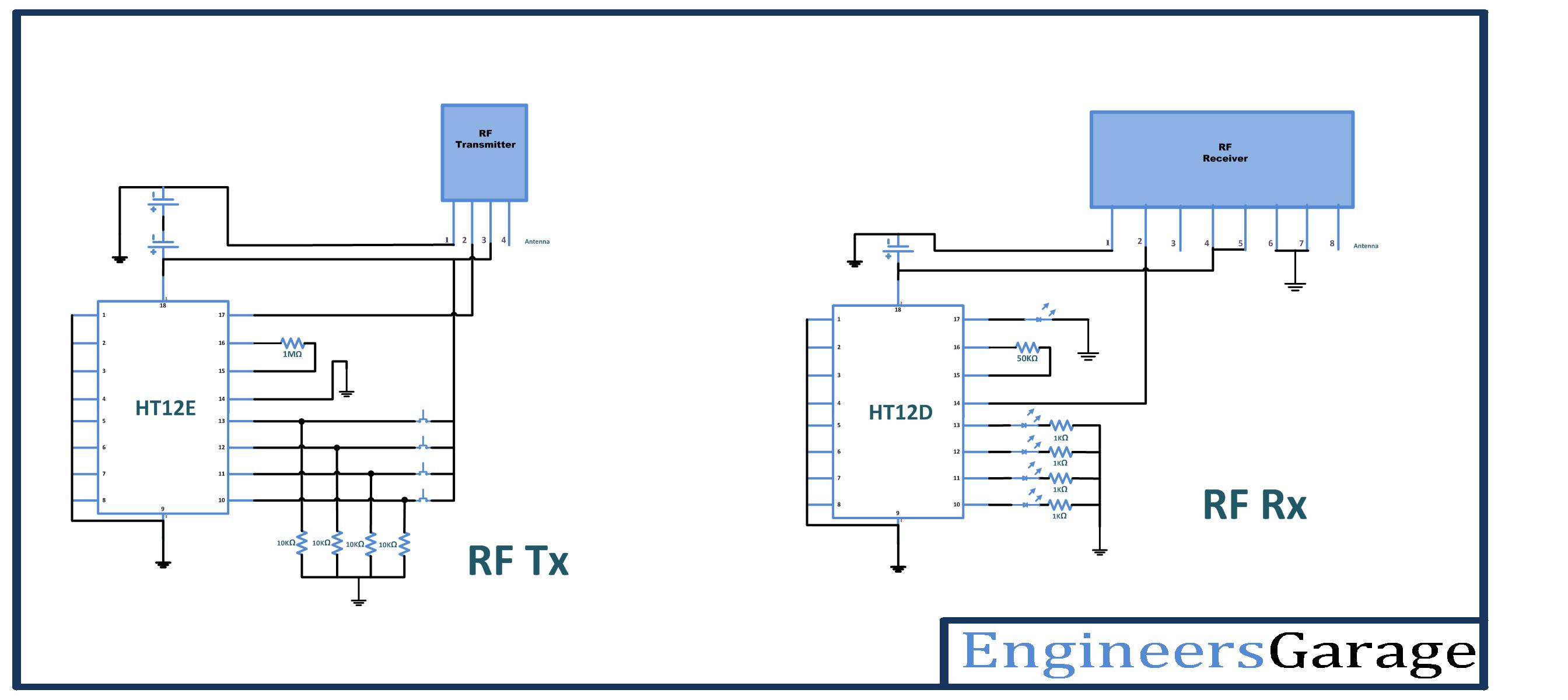How to increase the transmission range by increasing transmitted power?
Background:
When we are working with radio frequency technology, and after successfully sending and receiving data, next is to find up to how much distance receiver can receive the signal from transmitter that means the range. Range means the area of variation between upper and lower limits on a particular scale. In other words transmitter can transmit signal up to some distance. After that, RF signal will totally corrupt because of noise (EM wave becomes plane wave). In current system, different frequency modules works with different ranges, like 434 MHz RF module normally works 70 to 100 meters. But range is based on several factors like input power, antenna size etc.
If we want to increase the range, we can increase by increasing input supply voltage to the transmitter section.
New idea
The new idea in this project is, to increase the transmitting range by increasing transmitted power. Here in this project we can get more than 200 meter range using same RF 434 Mhz module and also if we apply sufficient power then it may be possible to get range of more than 300 meters.
Description:
In this project transmitter and receiver circuits are as same basic circuits using HT12E/HT12D. But the only change is increase in transmitted power, In this project, I am increasing transmitter power level by connecting extra battery, The other way is using variable power supply source As per radio theory, high frequency signal should travel long distance means high frequency signals should cover long range. But the signal travels long distance does not depend only on frequency range but also depends on many other factors like strength of the signal. Signal strength is directly proportional to the applied input power. So if we want signal travels longer distances, it has to be given more strength by applying more power.

Fig. 1: Diagram of Transmission Range
When I was doing this project, lot of times I noted that, the change in transmission range is very less as a variation in input power. But here I tried with extra batteries. If we try with sufficient variable power supply sources, we can get good result. So let us see how this can be done
Required components and other equipments:
Sr. no. Name of component Required qut
1 RF Tx module(434Mhz) 1
2 RF Rx module(434Mhz) 1
3 HT12E 1
4 HT12D 1
5 LED 5
6 Resistor – 1KΩ (Quarter watt) 8
7 Resistor – 1MΩ (Quarter watt) 1
8 Resistor – 50KΩ (Quarter watt) 1
9 Pushbutton 4
11 Battery – 9V 1
15 Bread board 2
18 connecting wires —
Pictures:

Fig. 2: Image of RF Receiver in Action

Fig. 3: Prototype of RF Receiver

Fig. 4: Prototype of RF Transmitter with Increased Range
Description:
Procedure:
Transmitter section:
Step1: connect the four push buttons to the data input pins (10, 11, 12, 13) of HT12E, with pull down resistors of 1 K.
Step2: connect 1MΩ resistor between 15 and 16 pins of HT12E.
Step3: connect 17 pin to the 2nd pin of RF transmitter, and 14 pin connect to the ground.
Step4: 1-8 pins of HT12E are address pins, connect all to the ground. And connect pin 18 to Vcc and pin 9 to ground.
Step5: Connect RF Tx module’s pin 1 to the ground, pin 3 to the Vcc and pin 4 to the antenna.
Step6: connect two 9V batteries to increase power.
Receiver section:
Step1: connect four LED’s to the output pins (10, 11, 12, 13) of HT12D, with pull down resistors.
Step2: connect 50KΩ resistor between 15 and 16 pins of HT12D.
Step3: connect pin 14 of HT12D to the 2nd pin of RF transmitter. Connect pin 17 to the LED indicator (it will glow when signal is received)
Step4: pins 1-8 of HT12D are address pins, connect all to the ground. Connect pin 18 to Vcc and pin 9 to ground.
Step5: Connect RF Rx module’s 1, 6, 7 pins to the ground, pins 4 & 5 to the Vcc and pin 8 to the antenna.
Now let us look at the operation of circuit
Working:
1. When any switch is pressed at encoder input pin, the encoder generates a data sequence at 14th pin that is fed to the 2nd pin of Tx module. Tx module transmits signal as ASK modulated signal with data in amplitude variations. At receiver side, received signal is given to the pin 14 of decoder chip, from pin 2 of Rx module. As a output, respective Led will glow at decoder output pins
2. Note down the readings for distance as a transmitted range in line of sight and non line of sight with only one 9 V battery
3. Now, test range based on power variations (use two 9V batteries in parallel). Increase the input power of transmitter, and test line of site and non line of site wireless communication between Tx and Rx. Note down the readings of the distance, and compare the present readings with previous readings.
4. If we observe the readings, it may be clear the range with one 9V battery is less than the range with two 9V batteries.
Power(No. of batteries) -> One battery Two batteries
Range -> 68 meter 102 meter
Precautions:
1. Address lines should be same at both transmitter and receiver side.
2. At transmitter 14th pin of HT12E should be connect to ground or connect a switch between ground and the 14th pin to reset the encoder.
3. At transmitter side resistor between 15 and 16 pins of HT12E should be between 750MΩ to 1MΩ and at receiver side resistor between 15 and 16 pins of HT12D should be between 30KΩ to 50KΩ.
4. Incase if you want to use any other battery please check the data sheets of HT12E/HT12D before.
Circuit Diagrams
Filed Under: Electronic Projects



Questions related to this article?
👉Ask and discuss on EDAboard.com and Electro-Tech-Online.com forums.
Tell Us What You Think!!
You must be logged in to post a comment.